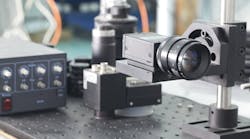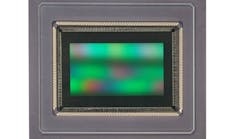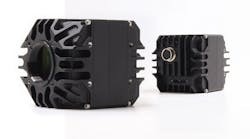High-performance imaging has yet to become a plug-and-play phenomenon.
Based on a favorable rating by PC Magazine and others, I recently installed a Millenium 450 AGP graphics board from Matrox Imaging (Dorval, Quebec, Canada) into my inexpensive Systemax computer system. Compatible with Microsoft's DirectX and Open GL graphics standards, the card proceeded to run programs such as Microsoft Flight Simulator 2000 robustly and smoothly.
Approximately five ICs are mounted on the Millenium 450 AGP graphics board. The board's intellectual property consists of one "graphics chip" that performs interpolation, Phong and Gouraud shading, and Z-buffering. This board exemplifies that high-performance graphics has now become a low-cost plug-and-play phenomenon.
NO ACCEPTED STANDARD
Unfortunately, in industrial image-processing systems, it's not as easy as plugging in an imaging card and using open standards to develop an application solution. Matrox and other board suppliers are familiar with this problem and offer a range of imaging boards, such as those for PCI-based Camera Link, IEEE-1394 FireWire, and LVDS/RS-422, among others. These boards can be interfaced to a number of different cameras to meet most application needs. However, the image-processing market provides no general-purpose application programming interface (API).
In the graphics industry, DirectX and ActiveX software tools give developers a set of APIs that provide access to the features of 3-D graphics-acceleration chips. These APIs also control "low-level functions," such as for 2-D graphics acceleration and support for input devices such as joysticks, keyboards, and mice.
For microscopy, machine-vision, medical-imaging, and military-aerospace applications, some disparate standards can be "ported" to meet the demands of specific applications. The result, of course, is increasing frustration for systems integrators who, in looking for image-processing packages, are forced to purchase one vendor's products over another on the basis of better software support.
SCENARIO REPEATED
In the early days of computer graphics, the common design rule was that graphics running on the host computer would perform as effectively as would an embedded graphics card. Years later, the same scenario is repeating itself in the machine-vision industry. Many suppliers are claiming that their PC-based packages can cost-effectively compete with specialized software packages that require custom hardware. Interestingly, as the demise of graphics companies such as Lexidata in the 1980s proved, the combination of low-cost hardware, graphics standards, and PC-based imaging hardware ended the special hardware/software bundle philosophy.
To drive market growth, image-processing and machine-vision systems must follow the lead of the graphics industry to allow standard-based hardware and software to be easily interchanged. Today, systems integrators are striving to design application platforms that can be deployed rapidly, but they are frustrated by the lack of imaging hardware and software standards.
Over time, these standards are bound to appear. But first it will require leading suppliers to come forward and offer software that contains the proper tools to perform as the industry de facto API standard. This software should be "open" so that other manufacturers are encouraged to apply and support it. Until then, the vision/imaging market will continue to struggle along a minimum growth path as numerous software and hardware vendors opt to provide proprietary "solutions" to application requirements.






